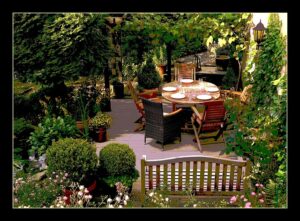Introduction
Dating antique furniture by its feet can provide valuable insights into its age, style, and origin. The feet of a piece of furniture can reveal important details about its craftsmanship and design, helping collectors and enthusiasts determine its historical significance. In this article, we will explore various types of furniture feet and their characteristics to assist you in dating antique furniture accurately.
Types of Furniture Feet
Ball and Claw Feet: One of the most recognizable types of furniture feet, ball and claw feet were popular during the Chippendale period in the 18th century. These feet feature a carved ball grasped by a claw, often resembling an animal’s paw. The intricacy of the carving and the level of detail can indicate the quality and craftsmanship of the piece.
Cabriole Legs: Cabriole legs are curved legs that taper inward at the knee and outward at the foot. This style was prevalent during the Queen Anne and Chippendale periods. The shape and curvature of the legs can help date furniture, with earlier examples having simpler and more restrained curves compared to the more elaborate designs of later periods.
Tapered Legs: Tapered legs are straight legs that gradually narrow towards the foot. This style became popular during the Federal and Sheraton periods in the late 18th and early 19th centuries. Tapered legs are often simple and elegant, reflecting the neoclassical influences of the time.
Bun Feet: Bun feet are round, bulbous feet often found on case furniture such as chests and cabinets. They are typically simple in design and were commonly used during the Victorian era in the 19th century. Bun feet can vary in size and shape, with earlier examples being more restrained and later examples becoming larger and more ornate.
Bracket Feet: Bracket feet are L-shaped feet that were popular during the William and Mary and Queen Anne periods in the late 17th and early 18th centuries. These feet are typically carved and can have various decorative elements such as scrolls or shells. The style and intricacy of the carving can provide clues about the piece’s age and origin.
Materials Used
The materials used for furniture feet can also offer insights into the age and style of antique furniture. Here are some common materials used for furniture feet:
Wood: Most antique furniture feet are made of wood, with different types of wood used during different periods. For example, mahogany was popular during the Chippendale and Federal periods, while walnut was commonly used during the Queen Anne and Sheraton periods. The type of wood used can help narrow down the age and style of the piece.
Metal: In some cases, furniture feet may be made of metal, such as brass or iron. Metal feet were often used during the Victorian era, particularly for mass-produced furniture. The presence of metal feet can indicate a later date and a more industrial manufacturing process.
Conclusion
Dating antique furniture by its feet requires careful observation and knowledge of different styles and periods. By examining the type of feet, their design, and the materials used, collectors and enthusiasts can gain valuable insights into the age, style, and origin of a piece of furniture. Remember to consider other factors such as overall design, construction techniques, and hardware when dating antique furniture.
References
– Encyclopedia Britannica: www.britannica.com
– The Spruce Crafts: www.thesprucecrafts.com
– Antiques Roadshow: www.pbs.org/antiques













